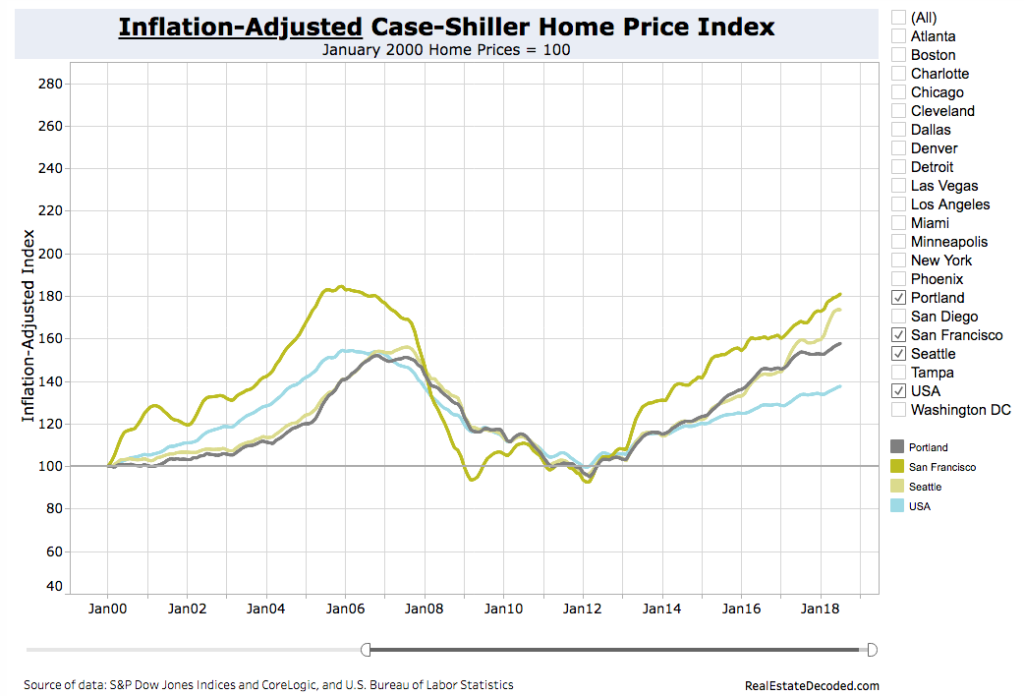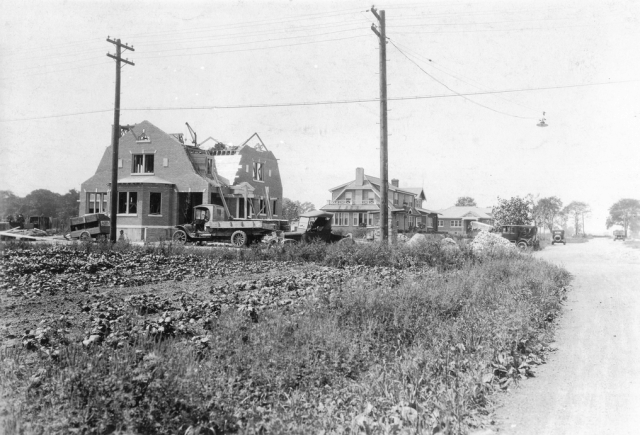Editors Note: We’re offering an abbreviated Thanksgiving Week version of the Week Observed. Our regular features–must read, new knowledge, and in the news–will return next Friday.
What City Observatory did this week
1. The long tail of the housing bust. It’s been a little more than a decade since the collapse of the housing bubble, but its effects are still apparent in housing prices, particularly when we adjust housing prices for the effects of inflation. Whether housing is a good investment depends critically on when you buy; those who bought before 2000, or who had good enough credit to purchase homes when credit was tight and housing prices were low (as in 2010) myave have seen some real price appreciation. But those who bought at the top of the bubble are still a long way from seeing any real appreciation of their homes.
2. Regional variations in home price appreciation. We dig deeper into the change in real housing prices since the collapse of the housing bubble, noting that while homes in some strong coastal markets have set new inflation-adjusted highs, a majority of major metropolitan housing markets have real housing prices today that are lower than in 2006. Housing has turned out to be a good investment, in terms of inflation-adjusted appreciation, only in places where demand is strong, and new housing is constrained, mostly by restrictive local zoning.
3. An “Immaculate Conception” view of your neighborhood. We reprise Daniel Kay Hertz’s classic essay exploring the myths we’ve constructed about how our existing housing stock came to be constructed, apparently without either developers, market incentives or class bias. The truth is that while the names of the developers are long since lost to time, the housing stock that every city has inherited was the product of profit motivated builders making new housing, chiefly for middle and upper income households.




